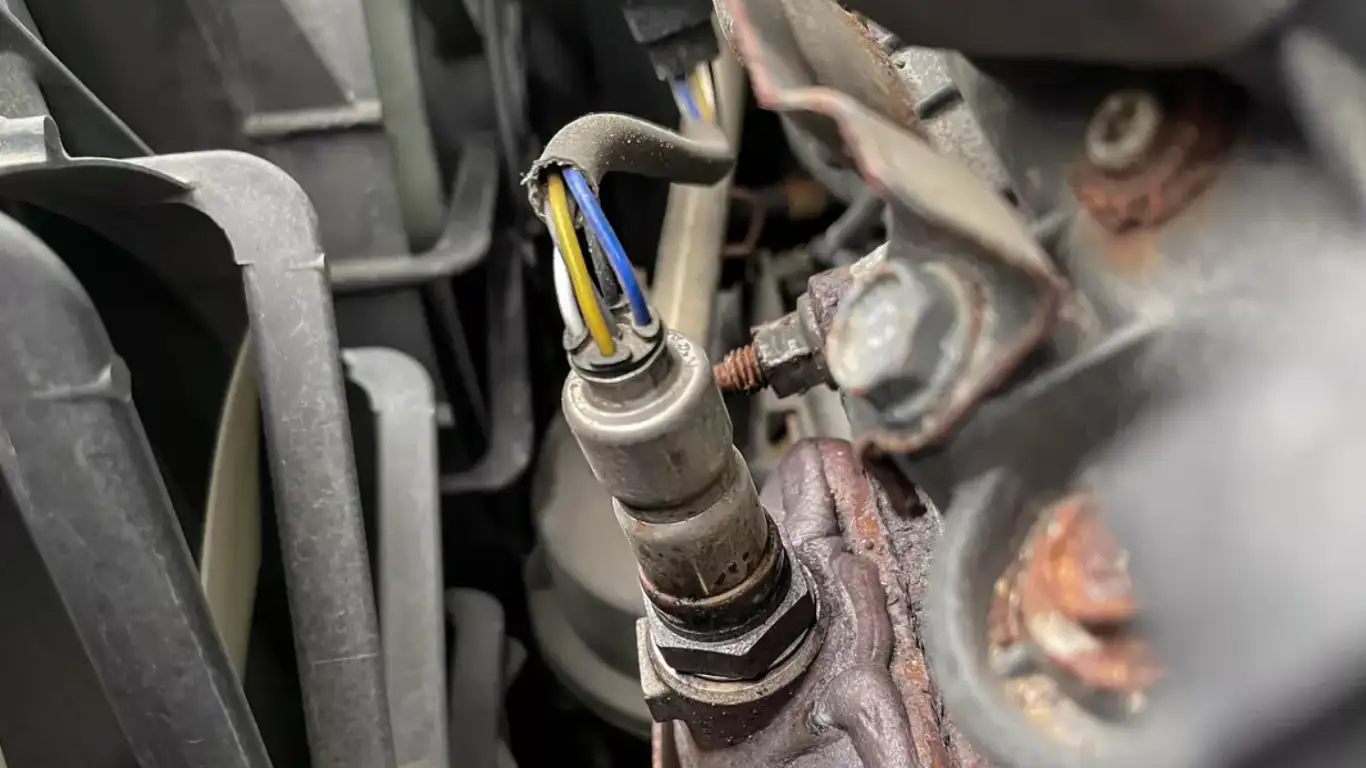The oxygen sensor, also known as the lambda sensor or O2 sensor, is a crucial component of the vehicle’s emission control system. Its primary function is to measure the amount of oxygen in the exhaust gases. Despite its seemingly modest task, the O2 sensor is one of the most important sensors in every vehicle, responsible for maintaining the correct balance between air and fuel for optimum emissions and efficiency.
How Does an Oxygen Sensor Work?
The oxygen sensor is typically located in the exhaust system, before or after the catalytic converter. It consists of a ceramic element coated with platinum and a porous protective layer. The sensor generates a voltage signal based on the difference in oxygen levels between the exhaust gas and the outside air.

When the engine is running, the O2 sensor compares the oxygen concentration in the exhaust gas to the ambient air. If the oxygen levels are high, it indicates a lean fuel mixture, while low oxygen levels indicate a rich fuel mixture. The sensor sends this information to the engine control unit (ECU), which adjusts the air-fuel ratio accordingly.
Importance of the Oxygen Sensor
The oxygen sensor plays a vital role in ensuring the engine operates at its most efficient level while producing the lowest possible emissions. Here are some key reasons why the oxygen sensor is important:
1. Optimal Fuel Efficiency
By continuously monitoring the oxygen levels in the exhaust gas, the oxygen sensor helps the engine maintain the ideal air-fuel ratio. This ensures that fuel is burned efficiently, maximizing fuel economy and reducing unnecessary fuel consumption.
2. Emission Control
The oxygen sensor is a critical component in the vehicle’s emission control system. It helps reduce harmful pollutants emitted by the engine, such as carbon monoxide (CO), nitrogen oxides (NOx), and hydrocarbons (HC). By maintaining the correct air-fuel ratio, the oxygen sensor enables the catalytic converter to effectively convert these pollutants into less harmful substances.
3. Engine Performance
The oxygen sensor directly affects the engine’s performance and responsiveness. If the sensor malfunctions or provides inaccurate readings, it can lead to poor engine performance, rough idling, and reduced power output. Timely detection and replacement of a faulty oxygen sensor can help restore the engine’s performance to its optimal level.
Signs of a Faulty Oxygen Sensor
It is essential to recognize the signs of a faulty oxygen sensor to address the issue promptly. Here are three common indicators of a malfunctioning oxygen sensor:
1. Decreased Fuel Efficiency
A faulty oxygen sensor can cause the engine to run rich or lean, resulting in decreased fuel efficiency. If you notice a sudden drop in fuel economy or find yourself refueling more frequently, it may be a sign that the oxygen sensor needs to be replaced.
2. Check Engine Light
The check engine light is a universal warning sign that something is amiss with the vehicle. While it can be triggered by various issues, a faulty oxygen sensor is known to cause the check engine light to illuminate. If the light stays on or flashes, it is recommended to have the sensor checked by a professional.
3. Poor Engine Performance
A malfunctioning oxygen sensor can negatively impact engine performance. You may experience difficulty starting the engine, rough idling, or reduced acceleration. These symptoms can be indicative of an O2 sensor problem and should be addressed promptly to prevent further damage to the engine.
When Should You Replace the Oxygen Sensor?
Oxygen sensors have a limited lifespan and should be replaced at regular intervals to ensure optimal performance. Here are some general guidelines for replacing oxygen sensors:
- Unheated 1 or 2-wire oxygen sensors typically have a service life of around 50,000 kilometers.
- Heated 3 or 4-wire oxygen sensors typically have a service life of around 80,000 kilometers.
- Planar oxygen sensors typically have a usage life of around 150,000 kilometers.
It is important to consult your vehicle’s manufacturer for the recommended service intervals specific to your model.
Common Oxygen Sensor Failure Codes
Oxygen sensor failures can trigger specific diagnostic trouble codes (DTCs) in the vehicle’s onboard computer system. Here are some common oxygen sensor failure codes:
- P0135: Oxygen sensor heater circuit malfunction (Bank 1, Sensor 1)
- P0175: System too rich (Bank 2)
- P0713: Fuel trim malfunction (Bank 2)
- P0171: System too lean (Bank 1)
- P0162: O2 sensor circuit malfunction (Bank 2, Sensor 3)
If you encounter any of these codes, it is advisable to have the oxygen sensor inspected and replaced if necessary.
Causes of Oxygen Sensor Failure
Several factors can contribute to the failure of an oxygen sensor. Here are some common causes:
- Contaminated Fuel: The presence of impurities or contaminants in the fuel can damage the oxygen sensor over time.
- Carbon Buildup: Carbon deposits on the sensor’s surface, often caused by a burning oil condition, can impair its functionality.
- Sensor Wear and Tear: Like any other component, oxygen sensors deteriorate with age and usage. Over time, the sensor may become less responsive or fail altogether.
If you suspect a faulty oxygen sensor or require professional assistance, it is recommended to consult an authorized service center.
Conclusion
The oxygen sensor is a critical component of the vehicle’s emission control system, responsible for maintaining the optimal air-fuel ratio and reducing harmful pollutants. By monitoring oxygen levels in the exhaust gas, the sensor ensures fuel efficiency, engine performance, and compliance with emission standards. Regular maintenance and timely replacement of a faulty oxygen sensor are essential for optimal vehicle performance and reduced environmental impact.
